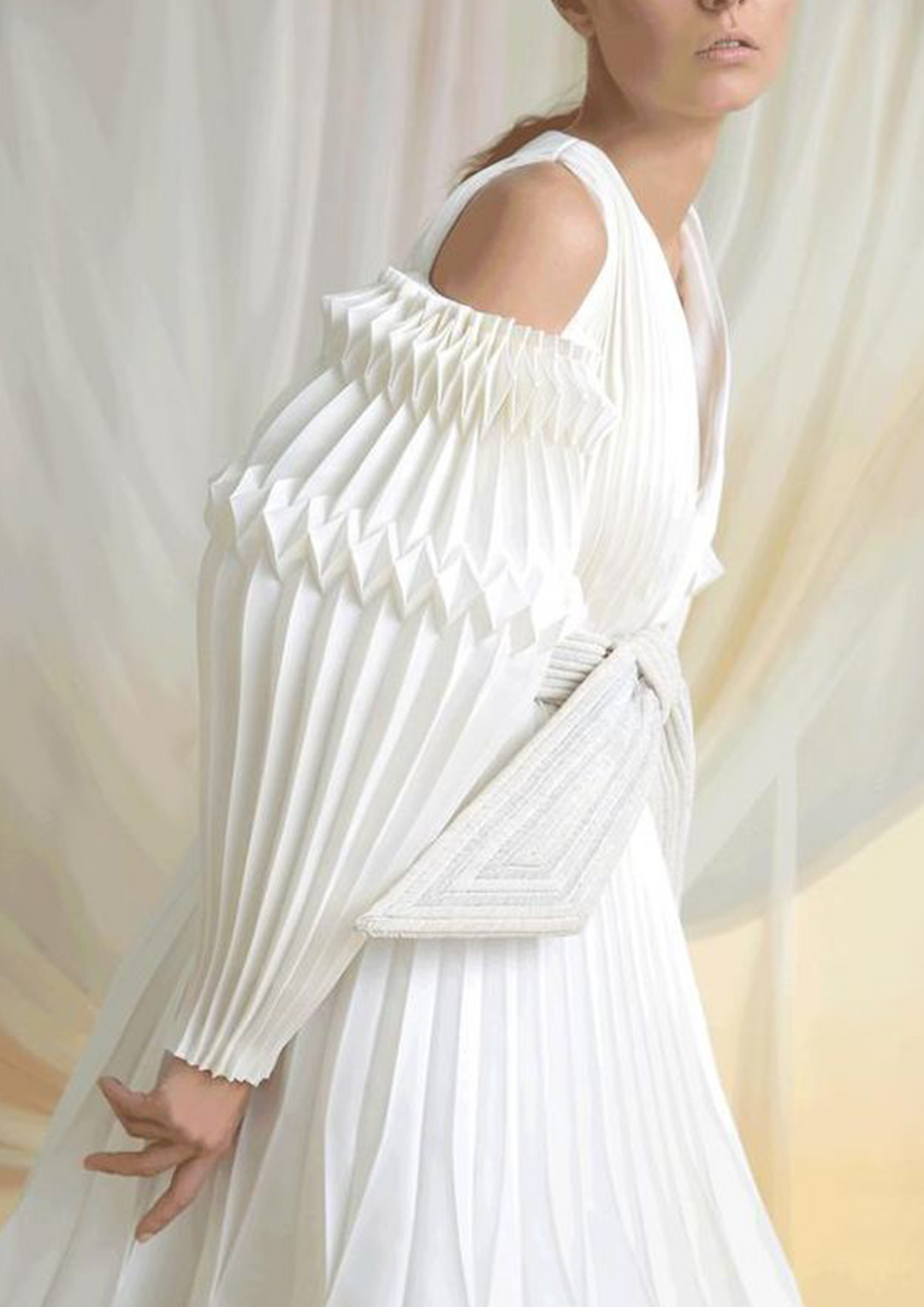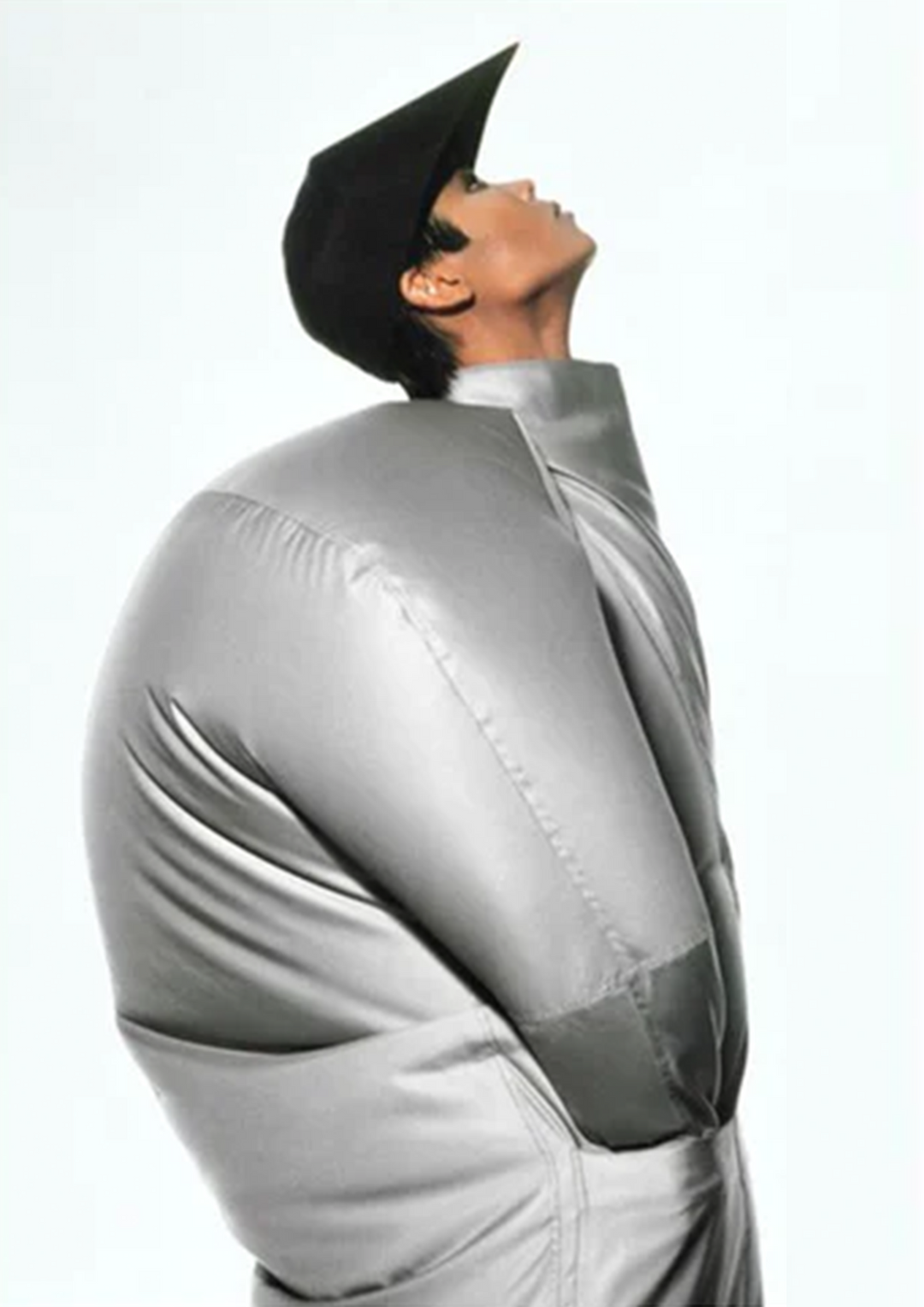The kimono - a journey through time through traditional Japanese clothing
About a decade ago I visited Japan and fell in love. The other landscapes, the special culture, the different language, the aesthetics, the cleanliness, even their sewer covers in the streets caught my eye. But most of all I was interested in Japanese clothing. Just before my new collection comes out, I checked and researched the origin of the iconic Japanese clothing item and what characterizes it.
The kimono is much more than just a garment. It is a symbol of the rich Japanese culture. It is a clothing item with a long tradition, reflecting values of beauty, aesthetics, and rituals.
The kimono, which means "thing to wear", first appeared in Japan in the 8th century, and has evolved over the centuries while incorporating influences from China and Korea. This is the traditional clothing of Japan. In the past, the word 'kimono' referred to all types of clothing, but over the years its meaning has narrowed and has become representative of the elegant and ceremonial robe used by men, children and especially: women.

A geisha wearing a kimono, photographed by Sam Ryan, customer from here
The kimono robe is currently used both as formal ceremonial clothing in ceremonies, holidays and family parties and as everyday clothing. It is a long shirt, made of a T cut and has a collar and wide and long sleeves. The kimono has woven or dyed prints according to themes. It wraps around the wearer's body with the left side spread over the right, and both are held in place by a wide belt that is usually tied at the back, known as an obi. It is customary to complete the wearing of the kimono with wooden sandals called geta worn by men and women, as well as special socks called tabi, traditional Japanese socks that reach up to the ankle and have a separation between the toe and the rest of the toes, usually in a white shade.
Kimono for women
There is a difference between the type of kimono worn by married women and the kimono worn by unmarried women.
Unmarried women will wear a furisode kimono. The literal translation is furi- moving, sode- sleeves. This is the most formal style of kimono with extra long sleeves that reach the floor (sleeves usually reach about 39-42 inches). The Purisuda was originally intended mainly for formal and special social events such as the tea ceremony and weddings of family members. Since it is a very expensive item of clothing, it is usually rented for the occasion. It is worn during the Saijin Shiki (coming of age) celebrations in the year when the woman reaches the age of 20. By wearing it, the young woman signals that she is legally single and therefore ready for marriage.
Married women will wear a kimono with shorter sleeves than unmarried women. The reason for this lies in the fact that a married woman works with her hands and therefore they must remain permanently exposed. A respectable woman zips up her kimono with an elongated sash tied at the back so she may need assistance to dress, indicating her respectable status. Lower class women are depicted in Japanese paintings with their kimono sash closing in the front so that they can close it alone.

Purisuda kimono, worn by unmarried women
Kimono for men
Unlike the women's kimono, the men's kimono is much simpler. It is usually made of one basic shape and its colors are quite subdued. Its degree of formality is determined by the type and color of the accessories, the fabrics and the number or absence of the family symbols (the ka-mon). Unlike the women's kimono style which includes extra deep sleeves that are mostly detached from the body of the kimono, the men's sleeves are less deep than the women's. In addition, the difference between women and men lies in the fabrics used. The typical male kimono comes in dark and restrained colors, such as black, dark blue, dark green and brown in contrast to the many colors that characterize the female kimono.
Weaving the kimono
Every kimono is made from "tan", it is a single roll of fabric that is produced in a size sufficient to sew only one kimono for an adult, so one whole roll is used to make one kimono. The fabric is woven on a Japanese hand-loom called Hata Oriki and is about 36-40 cm wide by about 11.5 meters long. The traditional kimono is woven by hand and designed by hand, traditional silk in satin weave, combined with decorated and gilded silk embroideries. With the development of the textile industry, cheaper and easier to preserve materials such as artificial silk, cotton, cotton satin, polyester and other synthetic fibers entered. However, in official circumstances, fine silk is considered the ideal fabric.
The kimono style ranges from a very formal style to a simple, easy and comfortable style for everyday use. The degree of formality in the female kimono is mostly determined by the pattern, weave and color. The patterns printed on the kimono are of great importance, which differentiate between an everyday kimono and a high-quality official kimono. Repeating woven or dyed patterns are more common on the everyday kimono, while on the high-quality formal kimono you can find free-form patterns that are dyed all over the fabric or just along the hem of the garment. In addition, according to the example of the top of the kimono, it is possible to determine in which season to wear it, for example:
The spring kimono includes patterns with butterflies or sakura (Japanese cherry);
The summer kimono features water-like patterns for hot summer days;
Autumn's kimono features patterns that include the golden-brown Japanese maple tree;
And the kimono of the winter includes samples that include bamboo, pine trees, blossoming plum trees, etc.
Unlike the women's kimono, the men's kimono is much simpler. It is usually made of one basic shape and its colors are quite subdued. Its degree of formality is determined by the type and color of the accessories, the fabrics and the number or absence of the family symbols (the ka-mon). Unlike the women's kimono style which includes extra deep sleeves that are mostly detached from the body of the kimono, the men's sleeves are less deep than the women's. In addition, the difference between women and men lies in the fabrics used. The typical male kimono comes in dark and restrained colors, such as black, dark blue, dark green and brown in contrast to the many colors that characterize the female kimono.
Weaving the kimono
Every kimono is made from "tan", it is a single roll of fabric that is produced in a size sufficient to sew only one kimono for an adult, so one whole roll is used to make one kimono. The fabric is woven on a Japanese hand-loom called Hata Oriki and is about 36-40 cm wide by about 11.5 meters long. The traditional kimono is woven by hand and designed by hand, traditional silk in satin weave, combined with decorated and gilded silk embroideries. With the development of the textile industry, cheaper and easier to preserve materials such as artificial silk, cotton, cotton satin, polyester and other synthetic fibers entered. However, in official circumstances, fine silk is considered the ideal fabric.
The kimono style ranges from a very formal style to a simple, easy and comfortable style for everyday use. The degree of formality in the female kimono is mostly determined by the pattern, weave and color. The patterns printed on the kimono are of great importance, which differentiate between an everyday kimono and a high-quality official kimono. Repeating woven or dyed patterns are more common on the everyday kimono, while on the high-quality formal kimono you can find free-form patterns that are dyed all over the fabric or just along the hem of the garment. In addition, according to the example of the top of the kimono, it is possible to determine in which season to wear it, for example:
The spring kimono includes patterns with butterflies or sakura (Japanese cherry);
The summer kimono features water-like patterns for hot summer days;
Autumn's kimono features patterns that include the golden-brown Japanese maple tree;
And the kimono of the winter includes samples that include bamboo, pine trees, blossoming plum trees, etc.

The kimono of the fall, which includes patterns in brown shades of the Japanese maple tree, taken from here
Choosing the style of kimono for the circumstances of the event is not an easy task at all. It requires familiarity with its symbolic meaning as well as the subtle social messages of the decoration, which reflect the woman's age, her marital status and the degree of formality of the event she is attending.
The kimono cut
The kimono is made of four main strips of fabric: two pieces of fabric that cover the body, and two pieces that make up the sleeves, which have additional smaller strips that form the narrow front wing and the collar.
As for the sizes, it can be seen that the men's kimonos exist in a variety of sizes, while the women's ones are woven in a uniform size so that each kimono is adapted to the wearer with pleats.
The traditionally woven kimono will have sleeves that reach the wrist when the arms are straight down. Kimono length for men is about ankle length. Kimono for women is longer and this is to allow enough fabric for the fold visible under the belt, the obi.
In the sleeve of the garment there will often be an invisible inner pocket used to store objects such as a handkerchief or a pouch.

Kimono cut, front and back, customer from here
The kimono treatment
In the past, in order to wash the kimono it was necessary to disassemble the kimono, and at the end of the washing and drying it would be re-sewn. Since then, new fabrics and innovative cleaning methods have been developed, and thus the need to disassemble the kimono into parts has ceased
As with other traditional Japanese garments, there are certain ways to fold the kimono. These methods help preserve it and protect it from wrinkling during storage. Often the kimono will be stored wrapped in paper. In addition, in every season of the year, the kimono is fanned before and after each wear.
In conclusion, the kimono is a piece of clothing with a historical flavor that has existed for thousands of years. It is an item of Japanese clothing that was influenced by traditional Chinese clothing and arrived in later years in different and varied versions to the West as well.
The kimono has remained relevant for so many years for both women and men and is a significant cornerstone of today's fashion. The kimono is still used today in Japan, but it has also become a popular fashion item around the world. Many designers incorporate elements of kimono in their designs, and the kimono is worn on special occasions and even by celebrities.
 A dress inspired by a kimono, from Liat Brendel's summer collection
A dress inspired by a kimono, from Liat Brendel's summer collectionThe kimono connects the past, the present and the future as a special item that has maintained its relevance for thousands of years and will remain relevant in the years to come. The kimono is not just a garment, but an expression of Japanese culture, tradition and art. It is a unique symbol of beauty, elegance and ritual, and adds a special touch to any event.

Contemporary and Western adaptation of the Kimono originating in Japan, by Anthropologie
The subject image of the post is taken from here
The subject image of the post is taken from here




 A woman wearing a fancy kimono, the image is taken from
A woman wearing a fancy kimono, the image is taken from 


Leave a comment